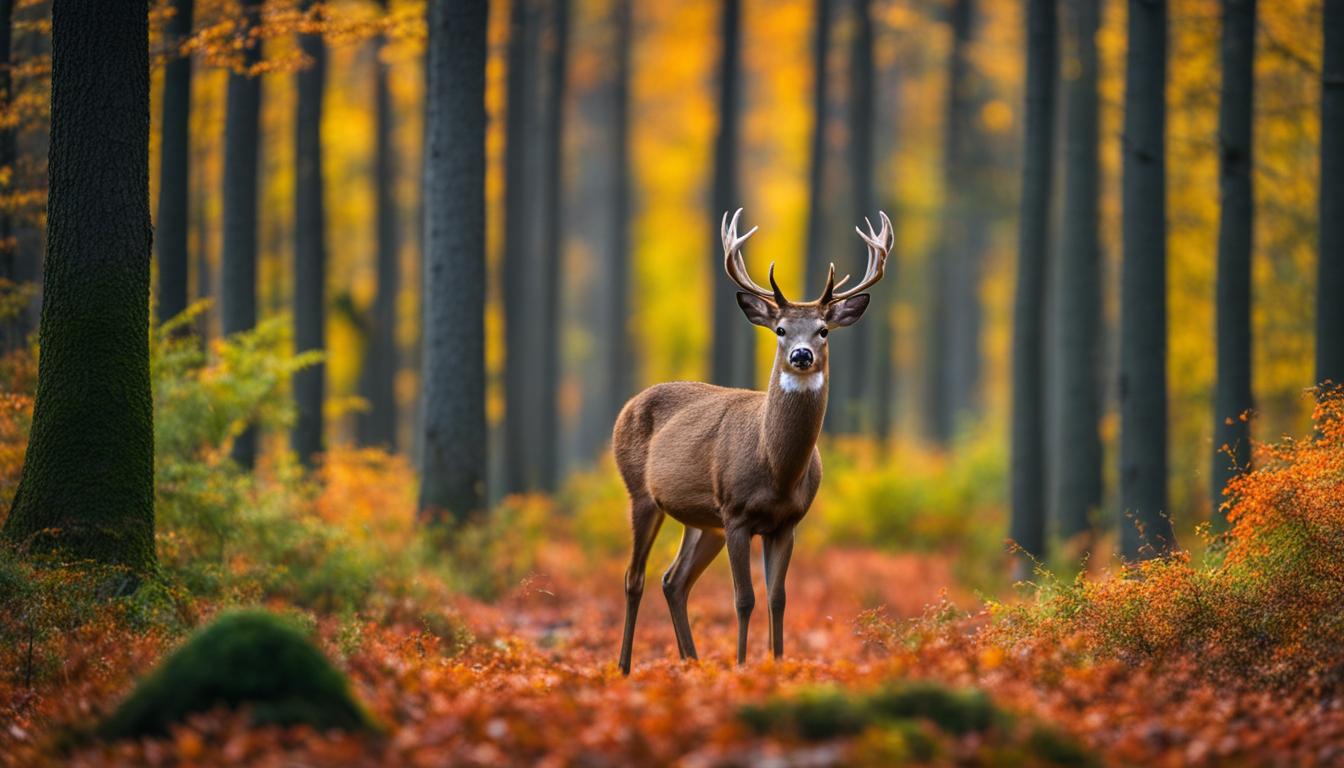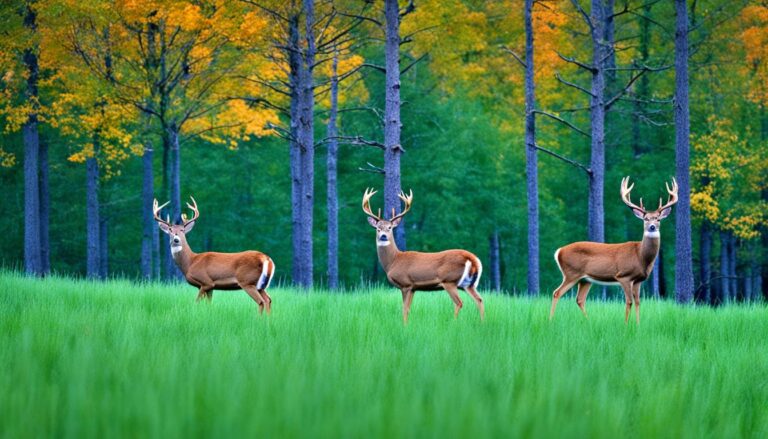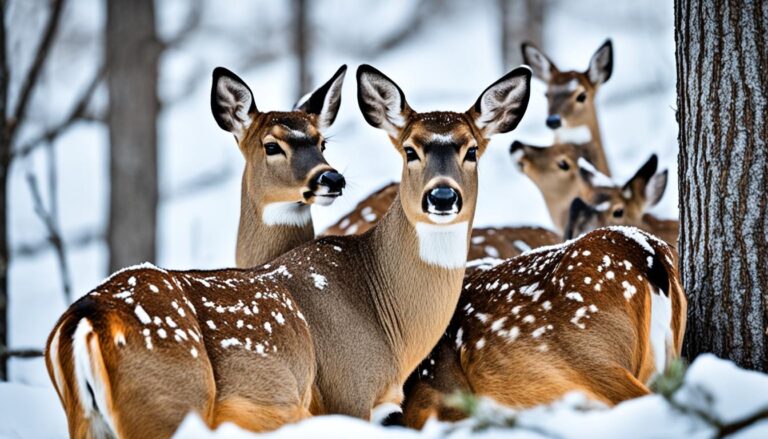Are Deers Blind? Understanding Deer Vision Explained
Deer hunters have long debated whether deer can see certain colors, such as blaze orange, and if they have the ability to see ultraviolet (UV) light. To understand deer vision, it is important to understand the basics of vision. In mammals, including deer and humans, vision occurs when light enters the eye and is absorbed by specialized cells in the retina. Humans have trichromatic vision, with three types of cone photopigments that allow us to perceive a wide range of colors. Deer, on the other hand, have dichromatic vision, with only two types of cones, which limits their color perception.
Additionally, deer have better nighttime vision than humans due to a higher concentration of rods in their retinas. They also have a tapetum, a reflective layer in the eye that gives their eyes a shining appearance at night. Recent studies have confirmed that deer can distinguish between blue and red, but not green and red or orange and red. They can also see into the UV spectrum, which has implications for hunters wearing UV-treated clothing. Overall, deer have different visual abilities than humans, with better nighttime vision but limited color perception.
Content Highlights
ToggleKey Takeaways:
- Deer have dichromatic vision, with only two types of cones, limiting their color perception.
- Deer have better nighttime vision than humans due to a higher concentration of rods in their retinas and a reflective layer called the tapetum.
- Deer can distinguish between blue and red, but not green and red or orange and red.
- Deer can see into the ultraviolet (UV) spectrum, which may affect how hunters wearing UV-treated clothing are perceived.
- Understanding deer vision is important for hunters when choosing clothing and gear for hunting.
Deer Vision Compared to Human Vision
When comparing deer vision to human vision, there are several notable differences. Humans have trichromatic vision, with three types of cones that allow us to see a wide range of colors. Deer, on the other hand, have dichromatic vision, with only two types of cones. This means that deer perceive colors differently than humans, particularly in the red and green spectrum.
Humans have trichromatic vision, with three types of cones that allow us to see a wide range of colors. Deer, on the other hand, have dichromatic vision, with only two types of cones. This means that deer perceive colors differently than humans, particularly in the red and green spectrum.
While humans can see fine detail due to the high concentration of cone cells in our retinas, deer have lower visual acuity and see less detail.
However, deer have an advantage when it comes to nighttime vision. Their eyes have a tapetum lucidum, a reflective layer that enhances their ability to see in low light conditions.
This gives deer better night vision compared to humans. Additionally, deer have horizontally shaped pupils that provide a wide field of view, particularly in their peripheral vision.
Deer have horizontally shaped pupils that provide a wide field of view, particularly in their peripheral vision.
These differences in vision between deer and humans have implications for hunting, as hunters should consider factors like color perception, detail visibility, and light reflection when choosing clothing and gear.
Practical Considerations for Hunters
Understanding deer vision is crucial for hunters to make informed decisions about their hunting gear and strategies. While deer’s color perception is less important compared to factors like scent and movement, hunters should still be mindful of their clothing choices. Research indicates that deer can distinguish certain colors, such as blue and red, but struggle with differentiating between green and red or orange and red. This suggests that hunters have more flexibility when it comes to choosing clothing colors, as long as they blend with the surroundings. Camouflage clothing is highly recommended as it helps hunters break up their silhouette and blend into the environment. However, it is important to avoid solid unbroken patterns, particularly of light colors, as they can reflect light and increase visibility to deer.
Another consideration for hunters is the use of UV brighteners in their hunting clothing and laundry products. Deer lack a UV filter in their eyes, making them more sensitive to UV light. Hunters should check their clothing for UV brightness and avoid washing them with laundry products containing UV brighteners if they are concerned about being more visible to deer. By minimizing the use of UV brighteners, hunters can reduce their chances of standing out to deer.
One of the most vital factors for remaining hidden from deer is minimizing movement. Deer possess an exceptional ability to detect and process motion, making stillness a key element in remaining undetected. Hunters should focus on staying as motionless as possible to avoid catching the attention of deer. This includes subtle movements like slow and deliberate positioning adjustments. By understanding deer vision and taking these practical considerations into account, hunters can significantly increase their chances of success in the field.
- Wyoming Deer Season 2025-2026 New Schedule & Rules - 15 September 2025
- Wisconsin Deer Season 2025-2026: WI Deer Hunting Guide [Schedule, Rules, Licenses] - 15 September 2025
- West Virginia Deer Season 2025-2026 Complete Date & Guide - 15 September 2025






